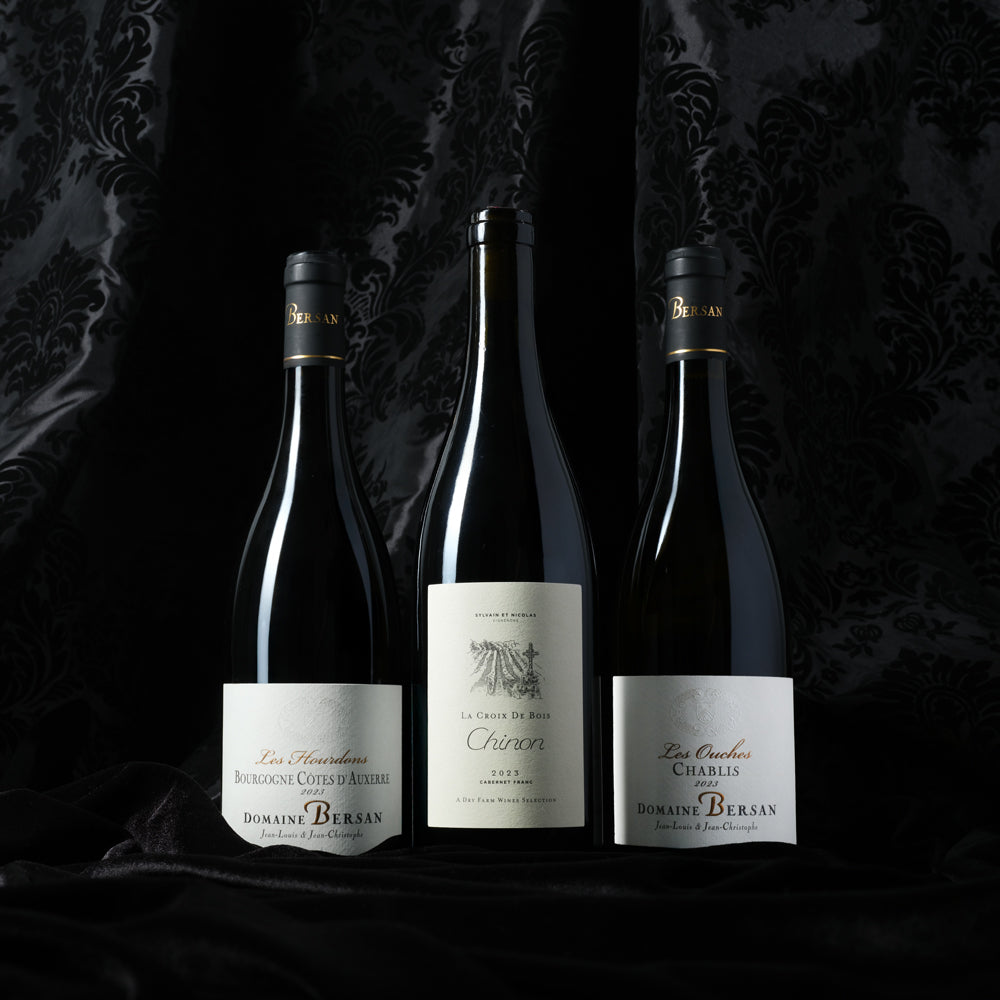
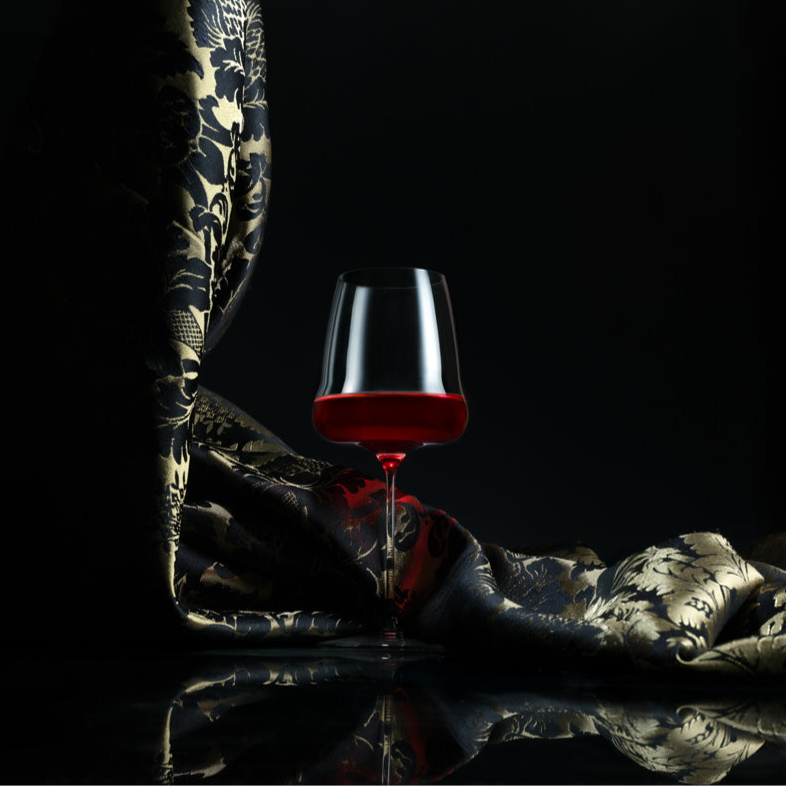
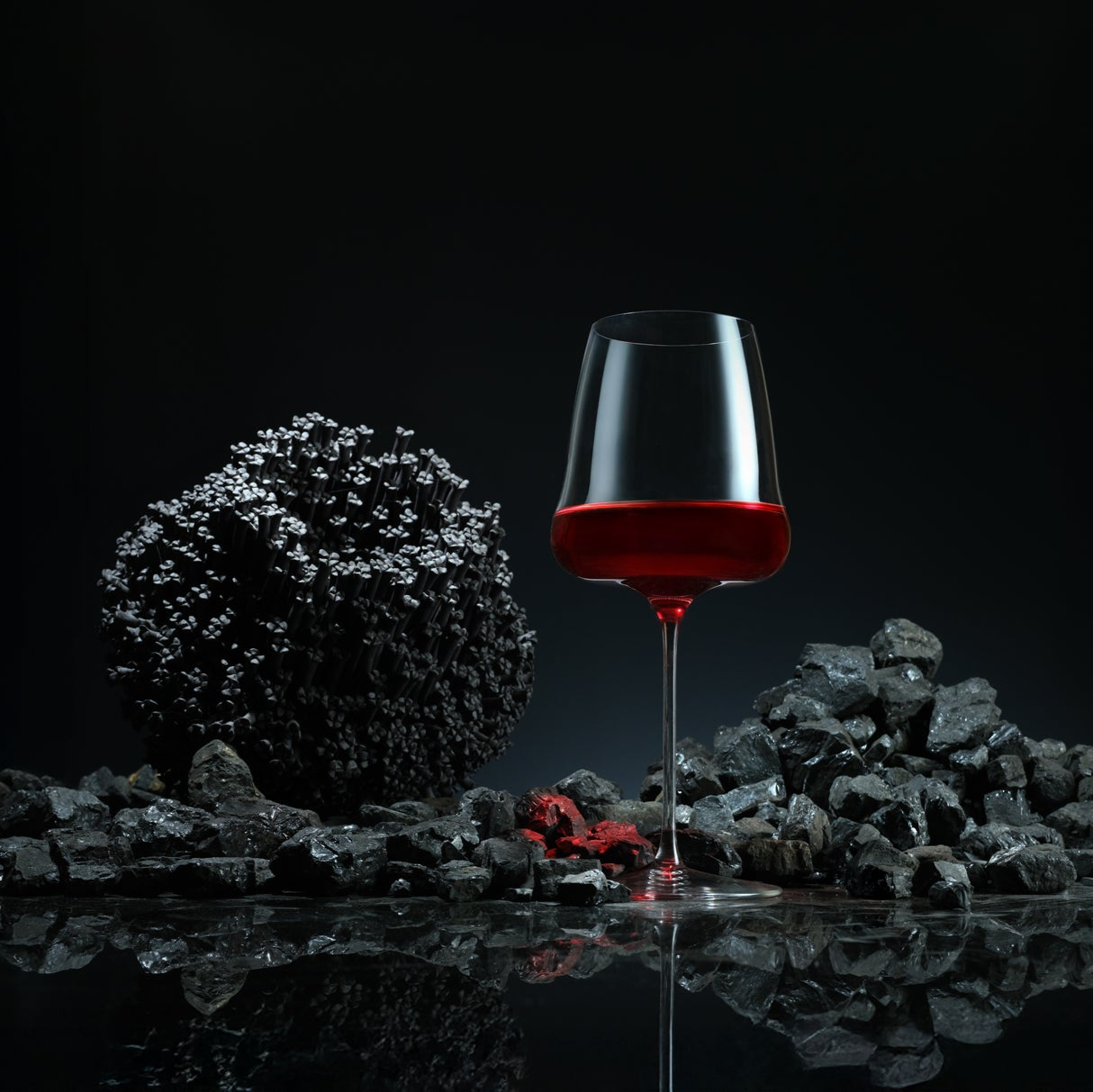
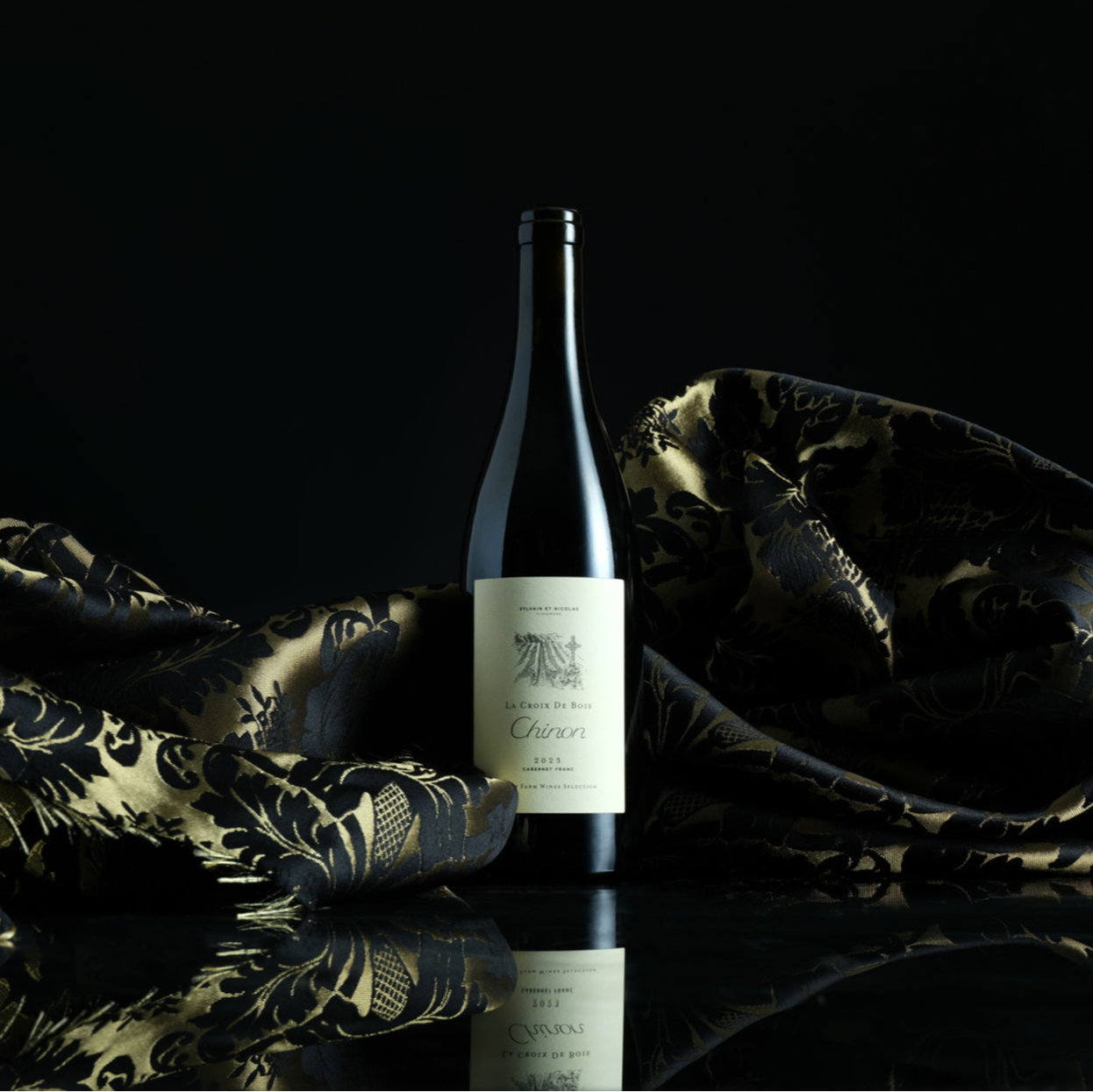
Summer Release Wines
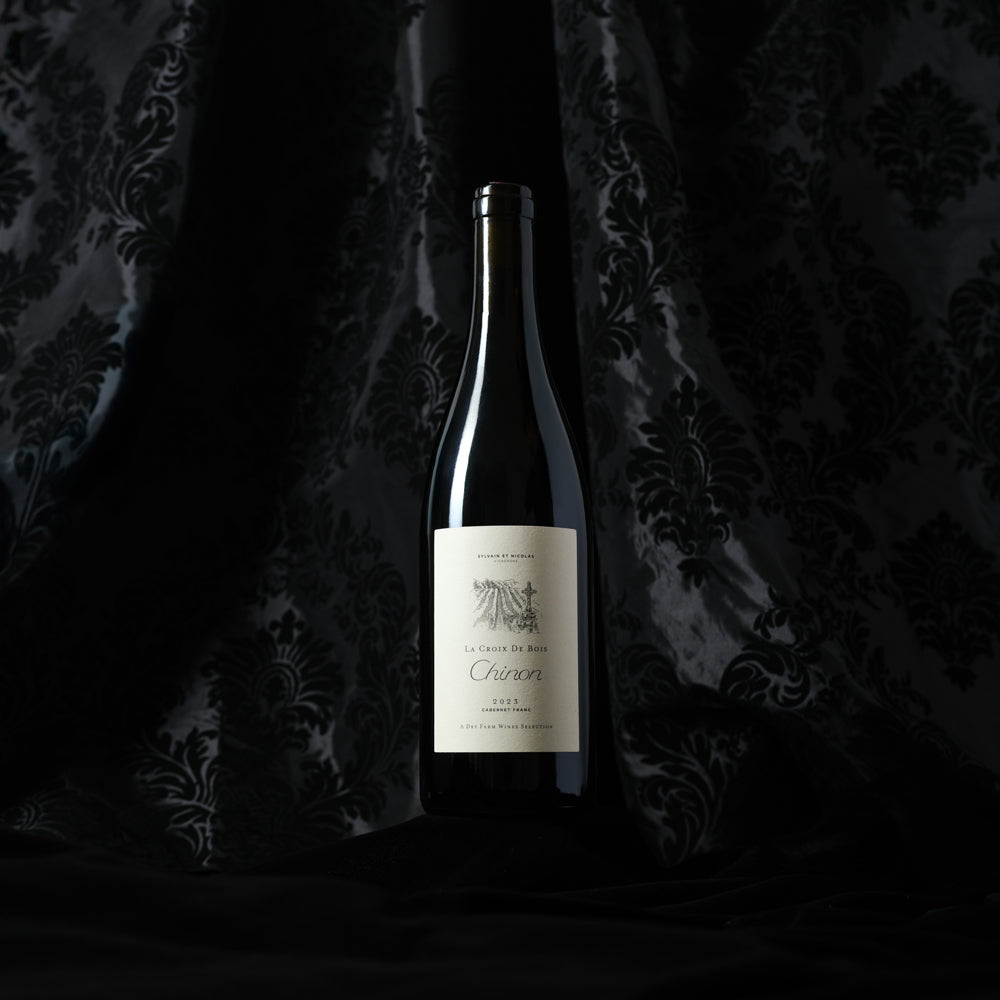
2023 Sylvain et Nicolas La Croix de Bois
Varietal
100% Cabernet Franc
Stemware Recommended
Bordeaux Stem
Drinking Window
Now until 2031
Tasting Notes
The Croix de Bois from Sylvain et Nicolas Grosbois abounds with rustic charm and vivacity, greeting the nose with pure dark cherry, dried oak leaves, and tender herbs before moving to a soft, velvety palate with distinctive mineral streaks, bold bing cherry and Italian plum fruits, and a long finish punctuated by sandy, food-friendly tannins.
Local Pairing Suggestions
Coq au vin, Boeuf bourguignon, fouée à la rillette.
12.5% Alcohol | 57°F Serving Temp | Decant? Yes, for 30 minutes
The Grower
Affectionately known as, “the Grosbois Boys,” Sylvain and Nicolas are two brothers that can trace their winemaking heritage in Chinon back to 1820. They basically have Cabernet Franc in their blood. From their pristine property atop Chinon’s famous Panzoult Hill, their aim is to grow wines that reflect their lively clay and limestone soils. No sulfur added to ferments, wild yeast, long, cool macerations, and concrete aging remove most human influence from the equation. Alongside their grape vines, you’ll find biodynamically grown wheat, fruit trees, vegetables, forest-dwelling pigs, and cattle roaming here and there, just like you would have many decades ago. It’s a holistic project centering on soil health and biodiversity — oh, and the wines are stupendous.
The Vineyard
| Vineyard Altitude | Vine Age | Soil Type |
| 130 meters | 55 years old | Calcareous argyle with gravel deposits |
La Croix de Bois, or La Croix Boisée, refers to one of the most prized sites for vinegrowing in all of the Loire. The esteemed Matthieu Baudry has compared the way that the soil undulates on this hillside, going from sandy clay at the foot of the vineyard, to clay and limestone, and finally pure limestone at the summit, to the hills of Burgundy’s Nuit-Saint-Georges and Beaune. Underneath the eponymous wooden cross that sits at the crest of this vineyard, the Grosbois’s southern-facing, old-vine Cabernet Franc achieves both uncommon ripeness, and minerality thanks to these tremendously unique soils.
The Vintage
After a hot and humid Spring, heavy rainfall in June did not exactly spell the best vintage in Chinon in 2023. However, despite the immense disease pressure, thanks to the deliberate, natural farming of the Grosboises, the brothers were able to harvest a majority of their grapes. Sustained sun and high temperatures all the way to September 20th, when the harvest took place, ensured ideal ripeness, and ultimately drinkability of the wines.
Winemaking
The grapes are immediately crushed after entering the winery, and left to ferment on the skins for eighteen days, while one pumpover a day is carried out to maintain the softness and elegance of the wine. The alcoholic fermentation takes place in large, traditional concrete tanks, and then transferred to 2nd use oak barrels - this deliberately slow, less intrusive approach ensures a velvety texture in the wine with plenty of ripe fruit.
The Region
Chinon is the world’s greatest Cabernet Franc region. It’s been recognized as such since Cistercian Monks planted the grape there in the 14th century. Part of the reason lies beneath the Earth. The unique limestone here – called “tuffeau” – which the monks used to build their monasteries, imparts a unique freshness to these wines.
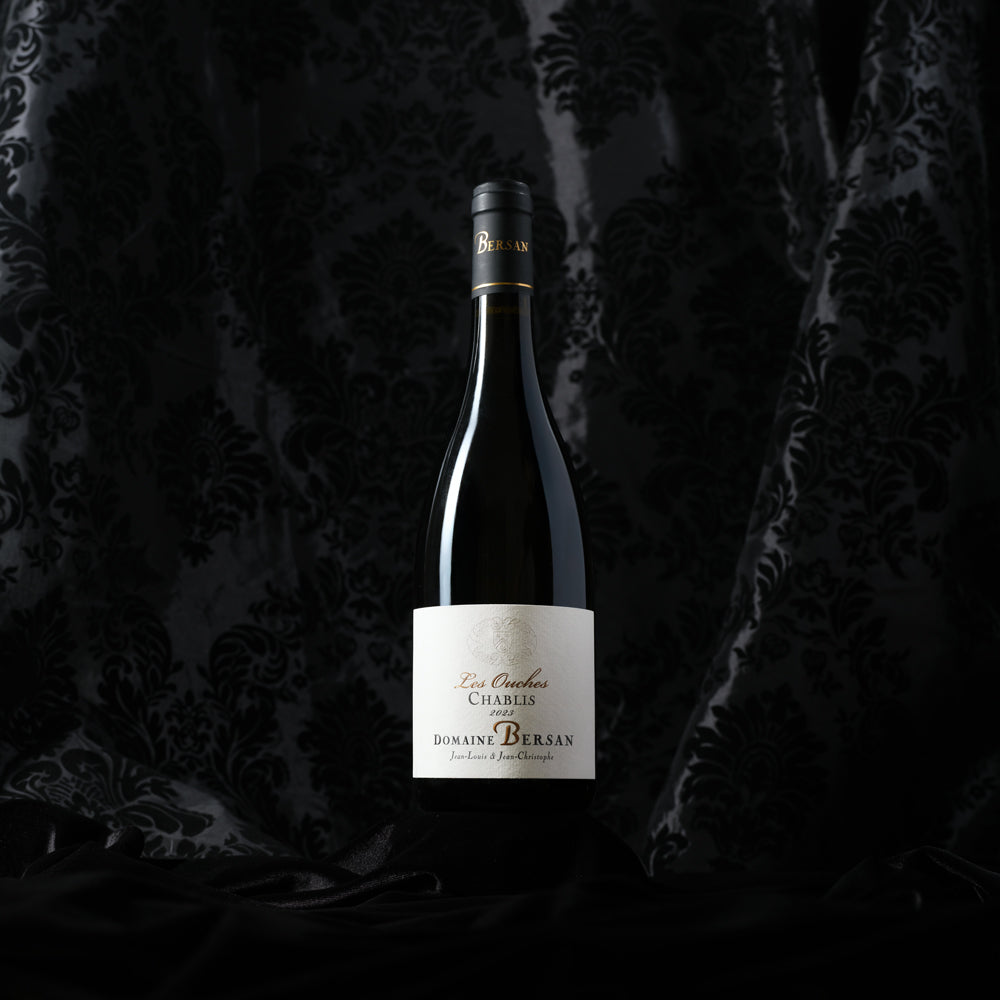
2023 Domaine Bersan Chablis “Les Ouches”
Varietal
100% Chardonnay
Stemware Recommended
Narrow White Wine Stem
Drinking Window
Now until 2036
Tasting Notes
A Chablis that shows its pedigree from first whiff, the "Les Ouches" opens with vivacious citrus that moves between sweet lemon and salty lime along with a crystalline minerality. On the palate, the wine's sheer energy and purity immediately shows why Chablis is one of the world's most cellar-able whites, expressing the same vibrant citrus and mineral elements with searing acidity to balance the wine's full body.
Local Pairing Suggestions
Gougères Gruyères, Poularde de Bourgogne à la Crème, Oysters on the Half-shell with Champagne Mignonette, Escargots à la Bourguignonne
11.7% Alcohol | 49°F Serving Temp | Decant? Optional, gentle 15-30 minute decant will open the wine more
The Grower
The operation at the Domaine is a family affair - Jean-Christophe trims and trains the same vineyards his grandfather planted just after World War II, and walks the same stone cellars as his five preceding generations. Those same stone cellars have existed since the 12th century, when Augustine monks made wine by candlelight here. There is history in their very situation in Saint-Bris, and surely more at stake here than just making great wine. The vignerons of Bersan respect their heritage through meticulous, honest, traditional caretaking of their family land. It’s no wonder that their working motto is,”healthy vines makes good fruit makes good wine.
The Vineyard
| Vineyard Altitude | Vine Age | Soil Type |
| 190 meters | 45 years | Kimmeridgian Argilocyst-limestone, predominantly blue clay |
Situated in the Southern Chablisien village of Préhy, the “Les Ouches” cuvée from Domaine Bersan takes its salty minerality, along with its ripeness from the rare, blue clay that surrounds this village. The vineyard is barely 1 hectare in total, and the old Chardonnay vines here thrive in the traditional guyot training method, ensuring low yields and concentrated fruit.
The Vintage
2023 was a steady vintage in Chablis, with no frost in the Spring, and just a bit of scattered rain amidst high temperatures in September. The bit of rain naturally increased yields, and diluted fruit a bit, making this an approachable and generous Chablis vintage, although the Bersan’s old vines, and practices in the vineyard mean that the wines still carry Chablisien vivacity and minerality. The grapes were harvested on September 26th.
Winemaking
Grapes are picked by hand, hand-sorted, and spontaneously fermented in both old oak barrels, and steel tanks. The wine is aged for 10 months on the fine lees with no battonage in the same divided vessels, and then left to settle for 4 months before being combined and bottled.
The Region
For almost two centuries now, Chablis has been thought of as the place for Chardonnay. Seventy-five miles north of Burgundy proper, an exceptionally cool climate, combined with rare Kimmeridgian limestone soils, made up of fossilized sea creatures from millenia ago, means that growing grapes in Chablis is extremely difficult, and growing them naturally is even more so. The combination of these growing conditions makes the growing season long and cool, allowing the Chardonnay grapes to ripen while still maintaining a fabulous acidity, and once these grapes are picked, only the highest end 1er crus end up in new oak. The majority of the wines are aged in steel or neutral oak, presenting wines with an intense minerality, zip, but still rounded quality that’s made them the favorite of Chardonnay drinkers the whole world over.
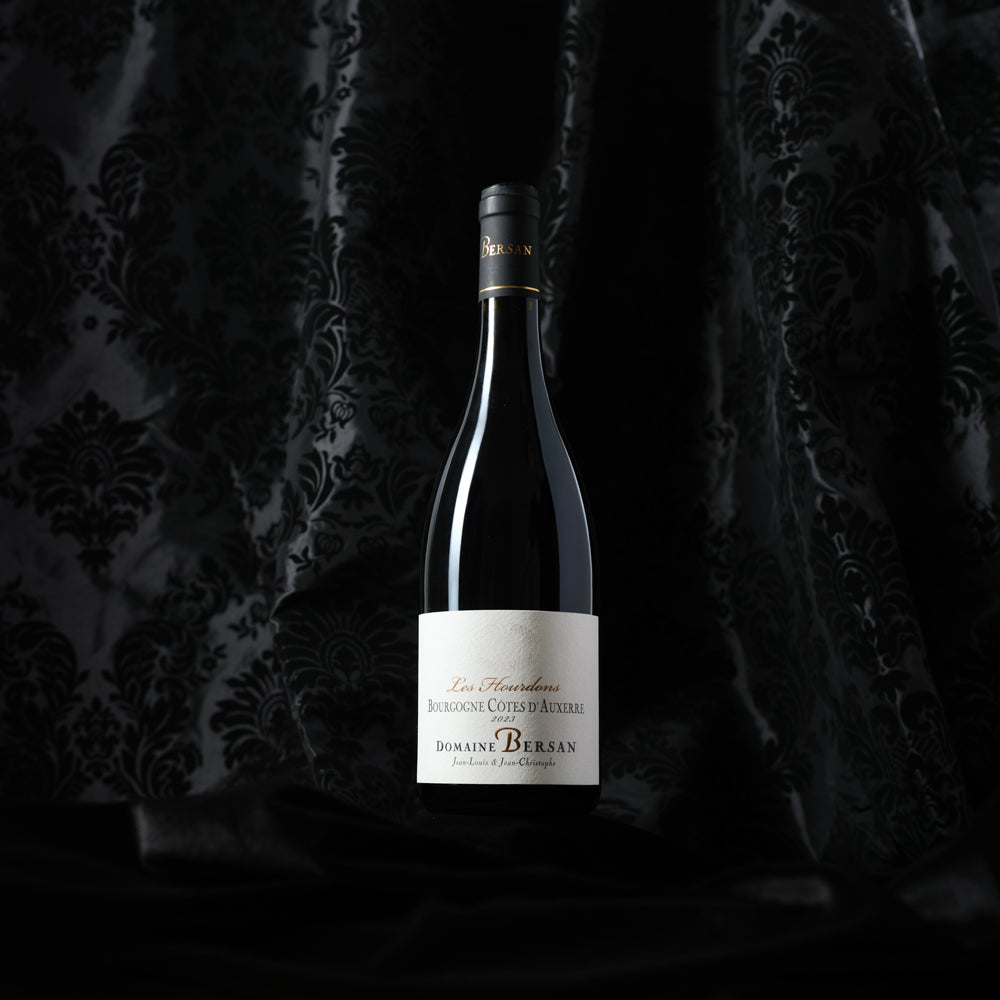
2023 Domaine Bersan Côtes d’Auxerre Rouge “Les Hourdons”
Varietal
100% Pinot Noir
Stemware Recommended
Wide-Bowled Burgundy Stem
Drinking Window
Now until 2034
Tasting Notes
The red wines of the Côtes d'Auxerre are unmistakable in the arena of Burgundy; featherlight, full-fruited, and hauntingly aromatic, these are among the most delicate Pinots. The "Les Hourdons" climat shows unmistakable notes of ripe sour cherry, clove and cardamom, along with a whiff of cigar smoke before descending to a palate that's full of freshly-picked red raspberries, overripe strawberry, and the same smoky mineral edge.
Local Pairing Suggestions
Magret de Canard aux Cerises, Pâté en Croûte, Andouillette, Escargots Bourguignonnes
12.5% Alcohol | 55°F Serving Temp | Decant? Optional, gentle 15-30 minute decant will open the wine more
The Grower
The operation at the Domaine is a family affair - Jean-Christophe trims and trains the same vineyards his grandfather planted just after World War II, and walks the same stone cellars as his five preceding generations. Those same stone cellars have existed since the 12th century, when Augustine monks made wine by candlelight here. There is history in their very situation in Saint-Bris, and surely more at stake here than just making great wine. The vignerons of Bersan respect their heritage through meticulous, honest, traditional caretaking of their family land. It’s no wonder that their working motto is,”healthy vines makes good fruit makes good wine.
The Vineyard
| Vineyard Altitude | Vine Age | Soil Type |
| 120 meters | 55 years | Kimmeridgian Argyle-Limestone, predominantly white clay |
A very small half-hectare vineyard, distinct in Burgundy for the prevalence of white clay here among the Yonne Valley’s typical kimmeridgian limestone. The vines are trained in a traditional single guyot, and face the South overlooking the river Yonne, and ensuring full ripeness year-after-year.
The Vintage
Like Chablis, 2023 was a steady vintage in the Côtes d’Auxerre with no frost in the Spring, and just a bit of scattered rain amidst high temperatures in September. The bit of rain naturally increased yields, and diluted fruit a bit, making this an approachable and generous vintage for Pinot Noir around the Yonne river. The rugged limestone soils here impart an unmistakable minerality, even in this more generous vintage, the Bersan “Les Hourdons” is brimming with tension.
Winemaking
Ripe Pinot Noir grapes are harvested by hand, hand-sorted, and then 80% destemmed before being vatted in stainless steel tanks. The grapes undergo a cold maceration for five to six days to enhance the Pinot’s signature aromas before alcoholic fermentation begins. During fermentation, the temperature is held below 82 ℉, and light pumpovers are performed for three weeks to gently extract pigment, tannin, and aroma. The grape skins are pressed off with a pneumatic press, and only the free run juice is then transferred to 1500 liter oak barrels.
The Region
Northwest of Burgundy’s famous Cote d’Or, you will find one of French wine’s best-kept secrets, the Côtes d’Auxerre. Lying on the same vein of cherished Kimmeridgian limestone as Chablis, these difficult soils do wondrous things for many vines, and many grape varieties. The sunny Southwest-facing Pinot Noir of the region has a distinct smokiness, and is a bit more ethereal than its southern cousins. These sparsely-planted, northerly slopes may not yield the opulent, roundly-oaked wines of the South, but they possess a tension and minerality that makes them one of Burgundy’s most unique sub-regions, and one where the wise oenophile can still find tremendous value.
FEATURED IN
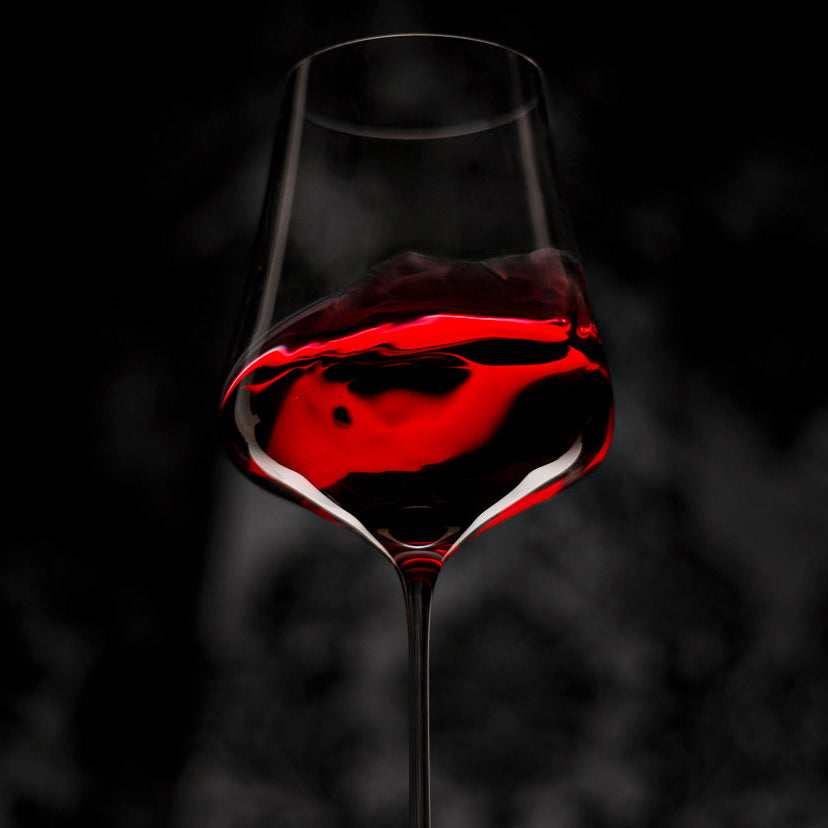
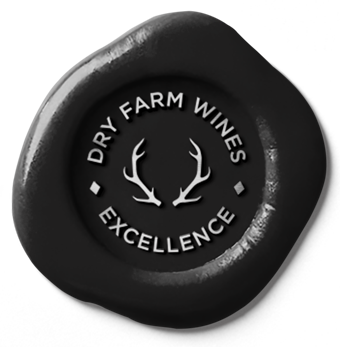
Our Seal of Excellence
A peerless commitment to wine purity. Every bottle of our artisan wine meets these standards:




















